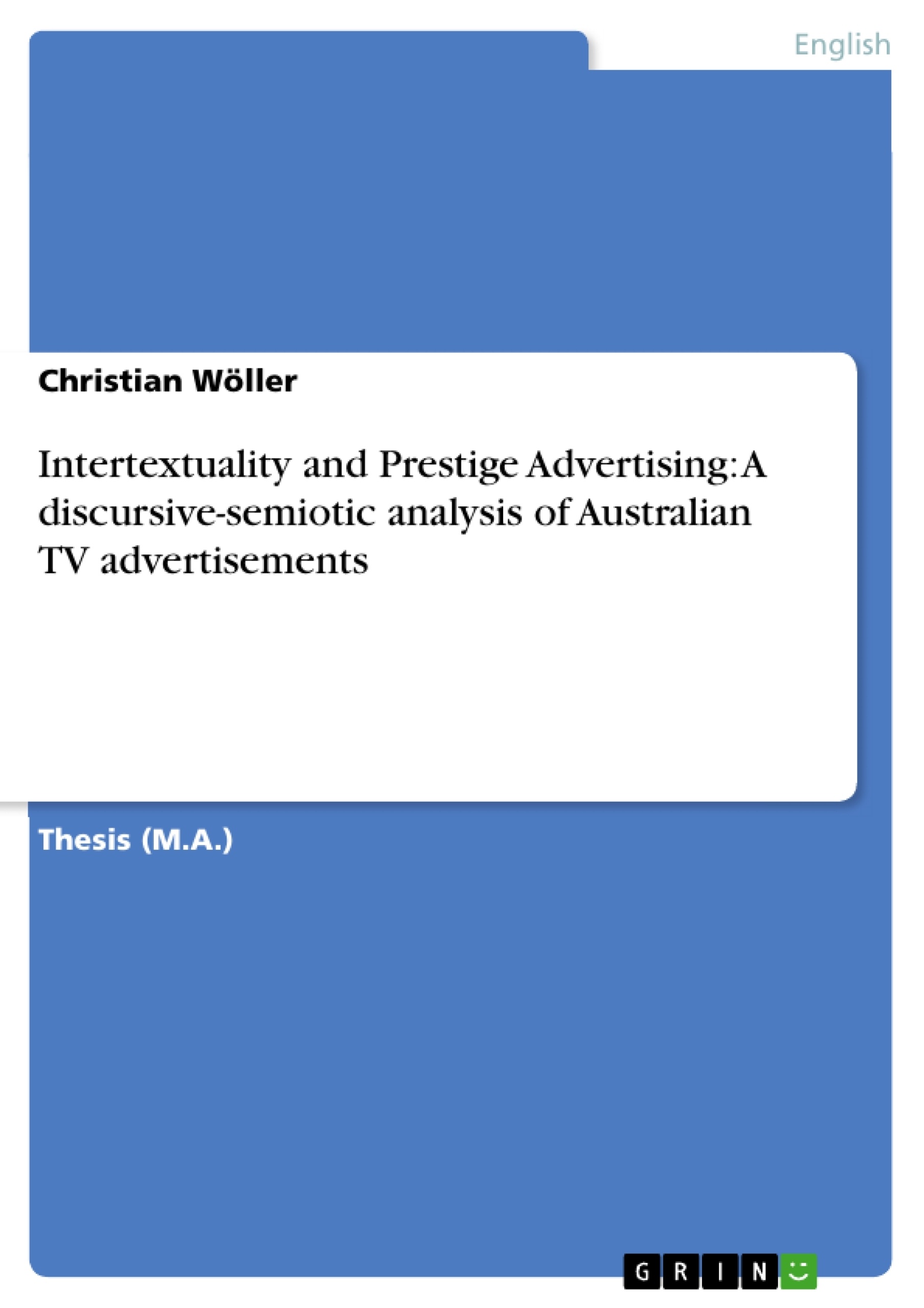Introduction
1.1. Foreword
Intertextuality is a term that has often been discussed in the linguistic analysis of literature texts. More recently it has become a popular term in media research, especially the analysis of advertisements. But what about Intersemioticity? Intersemioticity is a term that was coined only recently by Lipka (personal note). Like intertextuality, it deals with the relationship of texts to each other but refers not only to textual and verbal messages
but also to non-verbal information such as pictures or sounds. It can simply be seen as a web of references that link the textual, visual and aural elements of a primary message with textual, visual and aural elements from other messages. Even the interaction of
semiotic modes within a message marks a form of intertextuality which can be referred to as intra-semioticity. In modern TV advertising, both intra- and intersemioticity play an
important role as visual and verbal information continually overlap each other and consequently can no longer be defined as independent referential systems.
Prestige is a relatively broad term that, according to the Cambridge Online Dictionary (dictionary.cambridge.org/), is used to refer to the "respect and admiration given to someone or something, usually because of a reputation for high quality, success or social
influence". In advertising, it is often associated with luxurious goods or prestige items such as expensive cars or watches but also with personal prestige. Celebrated public characters often advertise for a product, which enhances the value of both the product
and sometimes the celebrity. In a more cultural context, prestige refers to the respect and admiration that is given to a cultural group because of its positive values and qualities.
In the opinion of most Australians, Australian culture stands for: friendliness, liberal thinking, personal independence, naturalness, openness, good humour, sportsmanship, nature loving and national pride. Advertisers who wish to boost the sales of an
Australian product to Australian consumers often address their target group by making references to these highly estimated "national characteristics".
[...]
Table of Contents
- Introduction
- Foreword
- Structure and objectives
- Aspects of Australian TV advertising
- Principles of TV advertising
- Frequently bought products
- Open or hidden message
- Australia's cultural image
- Multiculturalism and the incorporation of ethnic groups
- The role of Sydney 2000 as prestige marker
- The concept of intertextuality
- The development of intertextuality
- Dimensions and structures of intertextuality
- Vertical intertextuality
- Text and intertext
- The pre-text
- The concept of pre-texts
- The reproduction of pre-texts
- Individual pre-texts
- Referential systems
- Horizontal intertextuality
- The text genre
- Intra-textuality and intra-semioticity
- Semiotic structures in TV advertisements
- Communication processes
- The bi-directional communication process
- The one-way communication process
- Semiotic language
- Visual language
- Semantic properties of an image
- Iconicity and cultural responsiveness
- Indexicality and photographic evidence
- Syntactic properties of an image
- Interaction of semiotic modes
- Text image interaction
- Text image - sound interaction
- The concept of intersemioticity in advertising
- Functions of intertextuality
- Quotation
- The authenticity of quotations
- The transmission of quotations
- The effects of quotation
- Reference
- Allusion
- The mechanics of allusions
- Differentiation of allusions
- Marked and unmarked allusions
- Quotational, titular and onomastic allusions
- Comparative and assimilative allusions
- Analysis of the corpus
- Corpus coverage
- Analytical approach
- Levels of intertextuality in Australian beer ads
- The VB spots
- The Cascade spot
- The Hahn spot
- The Foster's spot
- Evaluation
- Semiotic interaction in competitive airline advertising
- The Ansett spots
- The Qantas spots
- Evaluation
- Celebrity endorsements as intertextuality markers
- The Telstra celebrity campaign
- The Ansett celebrity campaign
- Evaluation
- Quote paper
- Christian Wöller (Author), 2001, Intertextuality and Prestige Advertising: A discursive-semiotic analysis of Australian TV advertisements, Munich, GRIN Verlag, https://www.hausarbeiten.de/document/706


